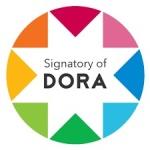متطلبات إدراج نظام العمل المرن
Résumé
يعتمد نظام العمل الثابت على ضرورة تقيد الموظفين بساعات عمل يومية وأسبوعية ثابتة، ورغم ضمانه التواجد في مكان واحد وأوقات محددة، لا يخلو هذا النظام من سلبيات ونقاط ضعف. لذلك تم اللجوء إلى نظام يستوعب المستجدات الاقتصادية، التكنولوجية والاجتماعية؛ وهو نظام العمل المرن والذي يتيح إمكانية تعديل جدولة العمل من أجل مصلحة مزدوجة بين الموظف والمنظمة. لكن، الممارسة العملية لنظام العمل المرن تستوجب توافر مجموعة من المتطلبات الخارجية والداخلية كتوافر القوانين الداعمة لتطبيقه ودعم كل من المسيرين والموظفين للنظام.
##plugins.generic.usageStats.downloads##
Références
( ) : محمد شاكر عصفور، نظام الدوام المرن، المجلة العربية للإدارة، مج 06، عدد 02، الرياض، 1982، ص :33.
( ): أحمد الطيب غبوش، نظام الدوام المرن، الإداري، س12، عدد41، مسقط، 1990، ص : 186.
) (: J.Michie et M.Sheehan-Quin, Market Flexibility, Human ressource management and corporate Performance, British journal of Management, Vol.12, 2001, p:289.
) ( : R. Coulon, La gestion de la flexibilité du travail : pratiques et marges de manœuvre des RRH, Gestion 2000, Vol. 23, no 04, 2006, p : 120.
) (: C. Fleenor, Managing human relation : Concept and Practices, Merrill, Publishing Co, USA, 1988, p:247.
( ) : عامر خضير الكبيسي، نظام الساعات المرنة، الأمن والحياة، السعودية، مج23 ، عدد 259، 2004، ص:62.
( ): E.J .Hill et Al, Finding an extra day a week : the positive influence of perceived job flexibility on work and family life balance, Family relations, 50, 2001, P:50
) ( Division of human resources, Alternative work arrangements: including flexible schedules, Division of human resources, University of New Mexico, July 2011, p: 09.
) ( MIT Center of wok, Family and Personal life et Al, A guide to job flexibility at MIT: tools for employees and supervisors considering flexible work arrangements, Massachusetts Institute of Technology (MIT), Cambridge, 2004, p:14.
) ( L. Golden, The flexibility gap : Employee access to flexibility in work schedules, Journal of Family and Economic Issues, 29(1), 2005, p:89.
) ( : Work-life Unit, Successful flexible work arrangement : An employer’s guide, Family Development Division, Ministry of community Development and Sports (MCDS), Singapore, 2002, p : 22.
) ( : Boris B. Baltes et Al, Flexible and Compressed Workrelated Criteria, Journal of Applied psychology, Vol 84, N°: 04, 1999, pp: 497, 498.
) ( :J.H. Bernardino, Human Resource management, 3th edition, Irwin Mc Grew_ Hall, U.S.A., 2003 .P: 107.
) (: Part time work Convention, N° 175, ILO, Geneva ; 1994.
) :( E. Galinsky et AL, When work works: A studyreport on workplace flexibility: who has it? Who wants it? What difference does it make? Retrieved from http:// familiesandwork.org/3w/research/downloads/status.pdf, last visit at 21/12/2015, 08:30 AM.
) (: Social protection sector, Condition of work and Employment program : work-sharing and job-sharing, ILO, Geneva, 2004.
) (: Victorian Public Sector Commission (VPSC), Making flexible work a success, Victoria State Government, 2012, p : 13.
) (: M.Ozaki, Negotiating flexibility: the role of the social partners and the state, International labour office, Geneva, 1999, pp: 45-55.
) (J. P. Windmuller et Al, Collective bargaining in industrialized market economies: A reappraisal, ILO, Geneva, 1987, p: 03.
) ( T. Van Peipje, The usefulness of comparative methods in studying trends in labour law, Industrial Relations Centre, Victoria University, Wellington, 1998, pp: 204,205.
) (L. Betten, The employment contract in transforming labour relations, Kluwer Law International Journal, The Hague, 1995, pp: 83- 90.
) (: L. Mc Nall et Al, Flexible work arrangements, job satisfaction and Turnover Intentions: the mediating role of work –to- family enrichment, The journal of psychology, 141(1), p:65.

Ce travail est disponible sous licence Creative Commons Attribution - Pas d’Utilisation Commerciale 4.0 International.















